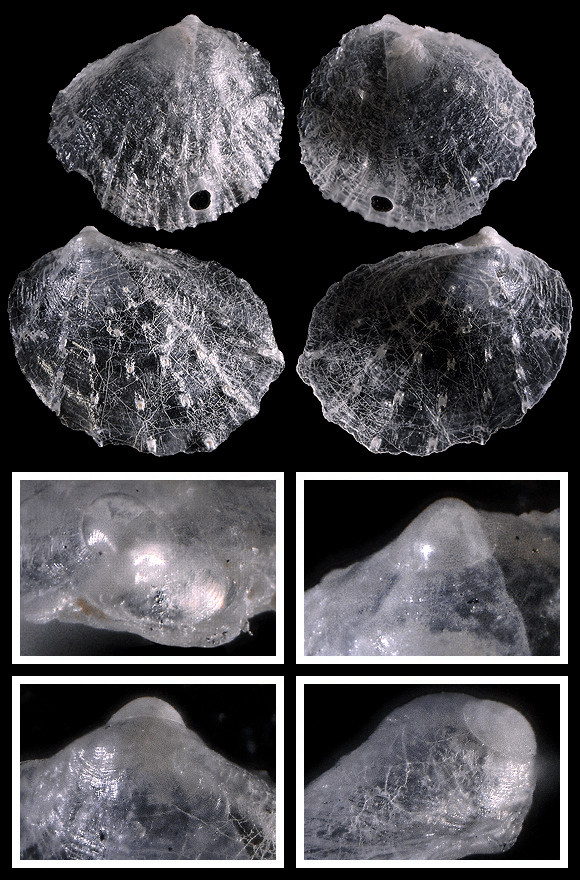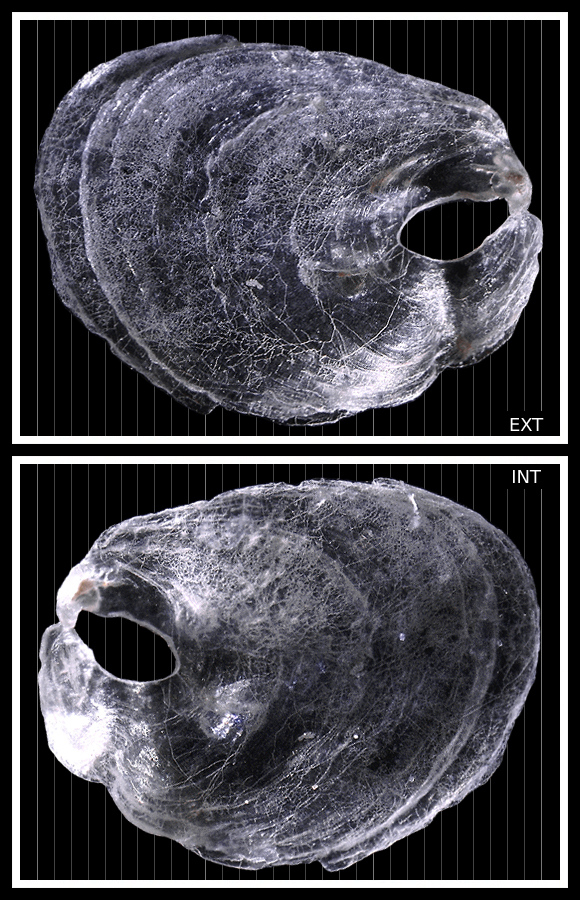
Original taxon: Anomia squamula.
120m deep, off Alghero, Sassari, NW. Sardinia. 5mm.

« Frequent on oysters, lobsters, crabs, and other marine bodies. Is distinguished from the young of the A. ephippium by being smooth, and by the small pointed beak or umbo ; is also much more flat. » – G. Montagu: Testacea Brittanica part. I, London 1803, via BHL.
Intertidal, Saint-Brieuc, N. Brittany, NW. France. 6,5-11,5mm.

« Attached by its byssus to many substrates from Laminaria in the sublittoral to Lophelia deep water corals at bathyal depths » – MBSBI. 80-100m deep, in coralligen, Mljet island, Dubrovnik-Neretva Comitat, S. Croatia. 4,5-7,5mm. Original pictures provided by N. Lete (HR) – (CC BY-NC-SA).
Many synonyms of poor interest.


« There is no distinction between the smooth and aculeate forms: I have taken wholly smooth, wholly aculeate and intermediate forms on the same Chlamys opercularis; nor can I find any essential difference in other varieties, such as cylindrica, Gmelin, from the arm of a crab Inachus. It is at once distinguished from all other Anomiidae by the gills, which have no ascending lamellae (Pl. I, f. 5). Two muscular scars in the upper valve, small adjacent but distinct (Pl. I, f. 12), not showing the radial furrows of Monia. The byssal plug is thin brown striate, as in Monia and quite different from that of Anomia. Jensen further points out (Danish Ingolf Exp., ii, 5, p. 1) that the notch of this species is small and oval and the umbo almost or entirely marginal, while the notch in patelliformis is large and triangular and the umbo always a little way off the margin. » – R. Winckworth: “Notes on the British species of Anomia”, Proceedings of the Malacological Society of London vol. 15, London 1922, p.34.